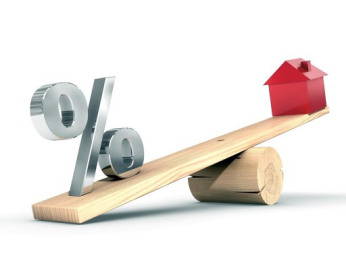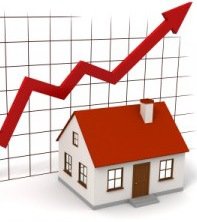Tight Inventory Brings Opportunity For Home Sellers
Blog, Market Updates, Selling | Dunham Stewart According to listing service Trulia, the annualized rate of listings for sale dropped 23-29% between March 2012 and September 2012. Since then, inventories of homes for sale have declined 12-21%. Zillow, a competitor to Trulia, reported that the number of listings fell 16.6% on a single day – February 24, 2013, compared to the same day in 2012. What does the slowdown of new listings on the market mean to buyers and sellers? Rapidly shrinking supplies typically leaves communities in a heated seller’s market with less than six months supply on hand. Ironically there are sellers that may pull back from the market, believing they can sell for more money later or that they won’t find another home. Buyers may be tempted to choose too quickly, just to get into the market. Locally, inventories are shrinking more rapidly than in other parts of the country. Some sellers may delay listing their homes, which improves the market further for listed sellers. This means that many underwater sellers can list their homes and sell them without losing equity. .
According to listing service Trulia, the annualized rate of listings for sale dropped 23-29% between March 2012 and September 2012. Since then, inventories of homes for sale have declined 12-21%. Zillow, a competitor to Trulia, reported that the number of listings fell 16.6% on a single day – February 24, 2013, compared to the same day in 2012. What does the slowdown of new listings on the market mean to buyers and sellers? Rapidly shrinking supplies typically leaves communities in a heated seller’s market with less than six months supply on hand. Ironically there are sellers that may pull back from the market, believing they can sell for more money later or that they won’t find another home. Buyers may be tempted to choose too quickly, just to get into the market. Locally, inventories are shrinking more rapidly than in other parts of the country. Some sellers may delay listing their homes, which improves the market further for listed sellers. This means that many underwater sellers can list their homes and sell them without losing equity. .

 The Federal Reserve’s is buying mortgage-backed securities to keep mortgage rates low and that may be bolstering upper tier home values rather than helping to make homeownership more affordable for entry-level buyers. For decades home buying demand has reflected mortgage interest rates, but no more. One question that has baffled policy makers for six year is: Why haven’t housing markets responded to historically low mortgage rates? In fact, record low rates have had an impact, according to a new analysis by three contributing editors of Home Value Forecast, just not the impact that the Fed anticipated. Affordability definitely improves when mortgage rates are lower and yet the beneficiaries of these more attractive mortgage rates are not evenly distributed among households of all incomes and wealth. It is very likely that the top tiers of the owner occupied housing market are the ones benefiting the most from lower mortgage rates as this group has been less affected by credit score downgrades or more restrictive underwriting,” the economists said.
The Federal Reserve’s is buying mortgage-backed securities to keep mortgage rates low and that may be bolstering upper tier home values rather than helping to make homeownership more affordable for entry-level buyers. For decades home buying demand has reflected mortgage interest rates, but no more. One question that has baffled policy makers for six year is: Why haven’t housing markets responded to historically low mortgage rates? In fact, record low rates have had an impact, according to a new analysis by three contributing editors of Home Value Forecast, just not the impact that the Fed anticipated. Affordability definitely improves when mortgage rates are lower and yet the beneficiaries of these more attractive mortgage rates are not evenly distributed among households of all incomes and wealth. It is very likely that the top tiers of the owner occupied housing market are the ones benefiting the most from lower mortgage rates as this group has been less affected by credit score downgrades or more restrictive underwriting,” the economists said.
 Home Prices Expected to Rise at least 3.3 Percent Annually though 2017. Both home prices and home sales volumes increased steadily last year, making 2012 the first positive year for both prices and sales since the housing market crash, excluding gains induced by the home buyer tax credits in 2009 and 2010. Actually 2012 was the first year since 1997 that the housing market has resembled something recognizable as normal. For the past 15 years, home price changes and sales volumes have either been boosted by a bubble mentality or crushed by crash psychology. The recovery in home prices has been solid and broad-based and is expected to grow at an annualized rate 0.6 percent through the third quarter of this year, then gain momentum. Prices are projected to grow 3.7 percent between the third quarters of 2013 and 2014 until settling down to 3.3 percent annual increases over the next three years according to Fiserv, a financial services technology provider using data from the Federal Housing Finance Agency.
Home Prices Expected to Rise at least 3.3 Percent Annually though 2017. Both home prices and home sales volumes increased steadily last year, making 2012 the first positive year for both prices and sales since the housing market crash, excluding gains induced by the home buyer tax credits in 2009 and 2010. Actually 2012 was the first year since 1997 that the housing market has resembled something recognizable as normal. For the past 15 years, home price changes and sales volumes have either been boosted by a bubble mentality or crushed by crash psychology. The recovery in home prices has been solid and broad-based and is expected to grow at an annualized rate 0.6 percent through the third quarter of this year, then gain momentum. Prices are projected to grow 3.7 percent between the third quarters of 2013 and 2014 until settling down to 3.3 percent annual increases over the next three years according to Fiserv, a financial services technology provider using data from the Federal Housing Finance Agency.
 Los Angeles County house prices jumped 12.2 percent in January from the year before, the second-biggest gain among large U.S. metro areas, housing data firm Core-Logic. The increase is the biggest annual price gain in single-family homes since April 2006, figures from the Irvine-based data firm show. Los Angeles County house prices have risen for eight consecutive months. Orange County had the nation’s fourth-highest price increase in January, with single-family homes selling for 11.7 percent more than in January 2012. Prices rose 12.1 percent in the Inland Empire, the third-biggest large metro-area gain in the nation. With these gains, the housing market is poised to enter the spring selling season on sound footing.
Los Angeles County house prices jumped 12.2 percent in January from the year before, the second-biggest gain among large U.S. metro areas, housing data firm Core-Logic. The increase is the biggest annual price gain in single-family homes since April 2006, figures from the Irvine-based data firm show. Los Angeles County house prices have risen for eight consecutive months. Orange County had the nation’s fourth-highest price increase in January, with single-family homes selling for 11.7 percent more than in January 2012. Prices rose 12.1 percent in the Inland Empire, the third-biggest large metro-area gain in the nation. With these gains, the housing market is poised to enter the spring selling season on sound footing.
 Homeowners insurance protects a homeowner against loss from fire and other hazards that may impair the value of their home. An estimate for the cost of homeowners insurance appears on the lender’s Good Faith Estimate when a borrower is approved for financing. Mortgage lenders require borrowers to carry homeowners insurance not because they are concerned about your home. They make you pay to protect the asset that guarantees your mortgage. However, homeowners don’t have to accept the insurance proposed by a lender and they’re well advised to shop around, because better deals often are available. Shopping for insurance is not as hard as it seems. There are two basic questions to ask any agent or company representative: what losses does your policy cover, and what losses are not covered by the policy? In addition to these questions, you should ask what additional coverage you might need given your situation. Most companies provide a number of additional coverages, often called “riders” or “endorsements”. Examples of additional coverage include such things as jewelry, furs, firearms, and backup of sewers and drains.
Homeowners insurance protects a homeowner against loss from fire and other hazards that may impair the value of their home. An estimate for the cost of homeowners insurance appears on the lender’s Good Faith Estimate when a borrower is approved for financing. Mortgage lenders require borrowers to carry homeowners insurance not because they are concerned about your home. They make you pay to protect the asset that guarantees your mortgage. However, homeowners don’t have to accept the insurance proposed by a lender and they’re well advised to shop around, because better deals often are available. Shopping for insurance is not as hard as it seems. There are two basic questions to ask any agent or company representative: what losses does your policy cover, and what losses are not covered by the policy? In addition to these questions, you should ask what additional coverage you might need given your situation. Most companies provide a number of additional coverages, often called “riders” or “endorsements”. Examples of additional coverage include such things as jewelry, furs, firearms, and backup of sewers and drains.
 Top tier properties are getting close to ending their multi-year buyers’ market and quickly reaching a more equal balance between buyers and sellers, catching up with less expensive homes . Since early December, the Institute for Luxury Home Marketing’s Market Action Index has risen 30 percent and is now only seven points away from reaching a seller’s market on a national level. The index, which is managed by Altos Research, measures available supply relative to the current level of demand. Despite the fact that the number of new listings has increased 51 percent over the past six weeks, the average days on market at 204 has declined slightly, from 209 to 204. Luxury homes typically take longer to sell than less expensive ones and the ILHM average days on market (204) are much higher than Realtor.com’s January median of 119 days for all price ranges. The percent of properties with a price decrease, another sign of buyer dominance, has also decreased over the past six weeks, from 26 percent to 24 percent of all luxury properties.
Top tier properties are getting close to ending their multi-year buyers’ market and quickly reaching a more equal balance between buyers and sellers, catching up with less expensive homes . Since early December, the Institute for Luxury Home Marketing’s Market Action Index has risen 30 percent and is now only seven points away from reaching a seller’s market on a national level. The index, which is managed by Altos Research, measures available supply relative to the current level of demand. Despite the fact that the number of new listings has increased 51 percent over the past six weeks, the average days on market at 204 has declined slightly, from 209 to 204. Luxury homes typically take longer to sell than less expensive ones and the ILHM average days on market (204) are much higher than Realtor.com’s January median of 119 days for all price ranges. The percent of properties with a price decrease, another sign of buyer dominance, has also decreased over the past six weeks, from 26 percent to 24 percent of all luxury properties.
 We are all on the same page that it is a seller’s market today in real estate. Not enough listings to feed the appetite of well qualified buyers aching to take advantage of historic low interest rates. If you are a buyer or a seller in today’s market, you’ll be having discussions with your Realtor to look at the comparable sales (same neighborhood, floor plan, size, number of bedrooms, condition, and location.) Your Realtor will call them “the comps.” So you’ll know what your home will sell for if you are selling, and you’ll know what you’re going to have to pay if you’re buying. Pay close attention ONLY to the comps that have actually closed in the last six to eight weeks. Prices are trending up right now and you want the most recently closed sale you can get your hands on.What’s the big secret to digging deeper to really understand the current market value today? Two things – that your Realtor reads the secret, for-agents-eyes-only remarks on the comps – because that’s where a ton of information can be found. And you won’t see it on Realtor.com, Trulia.com or Zillow.com. And secondly, having the gumption to call and ask what the story is. Haven’t had anyone hang up on me yet.
We are all on the same page that it is a seller’s market today in real estate. Not enough listings to feed the appetite of well qualified buyers aching to take advantage of historic low interest rates. If you are a buyer or a seller in today’s market, you’ll be having discussions with your Realtor to look at the comparable sales (same neighborhood, floor plan, size, number of bedrooms, condition, and location.) Your Realtor will call them “the comps.” So you’ll know what your home will sell for if you are selling, and you’ll know what you’re going to have to pay if you’re buying. Pay close attention ONLY to the comps that have actually closed in the last six to eight weeks. Prices are trending up right now and you want the most recently closed sale you can get your hands on.What’s the big secret to digging deeper to really understand the current market value today? Two things – that your Realtor reads the secret, for-agents-eyes-only remarks on the comps – because that’s where a ton of information can be found. And you won’t see it on Realtor.com, Trulia.com or Zillow.com. And secondly, having the gumption to call and ask what the story is. Haven’t had anyone hang up on me yet.
 The real estate market in the South Bay ended 2012 optimistically, with a rise in sales and median price of single-family homes and condos. according to the South Bay Association of Realtors sales of single-family homes in the area reached 245 transactions last month, a 16 percent rise compared with the same period a year earlier. The median price rose 8.7 percent to $500,000, up from a year earlier. Sales of condos and town homes were also strong, with 123 units changing hands, up 11 percent from a year ago. The median condo prices were up 18 percent to $395,000. Inventory was down 75 percent to 1.1 months worth of homes, compared with 4.4 months a year earlier. The report covers the South Bay, excluding the Palos Verdes Peninsula and Inglewood.
The real estate market in the South Bay ended 2012 optimistically, with a rise in sales and median price of single-family homes and condos. according to the South Bay Association of Realtors sales of single-family homes in the area reached 245 transactions last month, a 16 percent rise compared with the same period a year earlier. The median price rose 8.7 percent to $500,000, up from a year earlier. Sales of condos and town homes were also strong, with 123 units changing hands, up 11 percent from a year ago. The median condo prices were up 18 percent to $395,000. Inventory was down 75 percent to 1.1 months worth of homes, compared with 4.4 months a year earlier. The report covers the South Bay, excluding the Palos Verdes Peninsula and Inglewood.
 Going into 2013, home prices are expected to rise 6 percent driven by steady demand, lower bank-owned (REO) sales, and lower inventory of unsold homes. This is according to CoreLogic’s latest report. The CoreLogic Home Price Index (HPI) increased 6.3 percent in 2012, the largest increase and highest level since 2006. And year-over-year home price increases were more widespread. The two major drivers of improvement in the market have been the decline of real estate owned (REO) sales and less available inventory. The decline in REOs drove a sharp turnaround in home prices, but the impact of the decline will be less prominent in 2013. The major factor driving the market in 2013 is the lack of inventory. Current owners need to sell at prices high enough to extinguish their debt and provide equity for the next home purchase. Until home prices began to rebound in 2012, these borrowers had been effectively locked out and unable to list their homes for sale. The lock-out phenomenon, combined with the rise in investors converting foreclosures into rentals, led to a lack of for-sale inventory. These factors will continue to drive home prices rising in 2013
Going into 2013, home prices are expected to rise 6 percent driven by steady demand, lower bank-owned (REO) sales, and lower inventory of unsold homes. This is according to CoreLogic’s latest report. The CoreLogic Home Price Index (HPI) increased 6.3 percent in 2012, the largest increase and highest level since 2006. And year-over-year home price increases were more widespread. The two major drivers of improvement in the market have been the decline of real estate owned (REO) sales and less available inventory. The decline in REOs drove a sharp turnaround in home prices, but the impact of the decline will be less prominent in 2013. The major factor driving the market in 2013 is the lack of inventory. Current owners need to sell at prices high enough to extinguish their debt and provide equity for the next home purchase. Until home prices began to rebound in 2012, these borrowers had been effectively locked out and unable to list their homes for sale. The lock-out phenomenon, combined with the rise in investors converting foreclosures into rentals, led to a lack of for-sale inventory. These factors will continue to drive home prices rising in 2013



